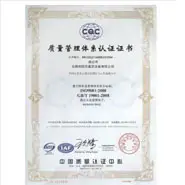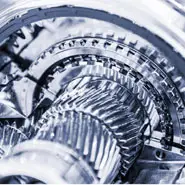(1) Overall structure type of pump
The arrangement structure of the pump body of the vacuum pump determines the overall structure of the pump.
The intake and exhaust ports of the vertical structure are set horizontally, and the assembly and connecting pipelines are more convenient. However, the center of gravity of the pump is high and the stability is poor during high-speed operation, so this type is mostly used for small pumps.
The air inlet of the horizontal pump is at the top and the air outlet is at the bottom. Sometimes, in order to facilitate the installation and connection of vacuum system pipes, the exhaust port can be connected from the horizontal direction, that is, the inlet and exhaust directions are perpendicular to each other. At this time, the exhaust port can be opened from left or right. In addition to one end of the exhaust pipe, the other end is blocked or connected to the bypass valve. The pump structure has low center of gravity and good stability during high-speed operation. Generally, large and medium-sized pumps adopt this structure.
The two rotor shafts of the pump are installed perpendicular to the horizontal plane. The structure has the advantages of easy assembly clearance control, convenient rotor assembly and small pump floor area. However, the center of gravity of the pump is high, the gear disassembly is inconvenient, and the lubrication mechanism is also relatively complex.
(2) Transmission mode of pump
The two rotors of the vacuum pump realize their relative synchronous operation through a pair of high-precision gears. The driving shaft is connected with the motor through a coupling. There are mainly two kinds of transmission structure layout: one is that the motor and gear are placed on the same side of the rotor, as shown in the figure. The driven rotor is directly driven by the motor end gear, so that the torsional deformation of the driving rotor shaft is small, and the gap between the two rotors will not change due to the large torsional deformation of the driving shaft, so the gap between the rotors is uniform during operation. The biggest disadvantages of this transmission mode are: A. There are three bearings on the driving shaft, which increases the difficulty of processing and assembly of the pump and inconvenient disassembly, assembly and adjustment of the gear; b. The overall structure is uneven, and the center of gravity of the pump is biased to the side of the motor and gearbox.
characteristic
(1) Larger pumping speed in a wide pressure range;
(2) The rotor has good geometric symmetry, so the vibration is small and the operation is stable. There is clearance between rotors and between rotor and shell, so there is no lubrication, and the friction loss is small, which can greatly reduce the driving power, so as to achieve higher speed;
(3) The pump chamber does not need oil sealing and lubrication, which can reduce the pollution of oil vapor to the vacuum system;
(4) There is no compression or exhaust valve in the pump chamber. Simple and compact structure, insensitive to dust and steam in the extracted gas;
(5) Low compression ratio and poor pumping effect on hydrogen;
(6) The rotor surface is a curved cylindrical surface with complex shape, which is difficult to process and inspect.






